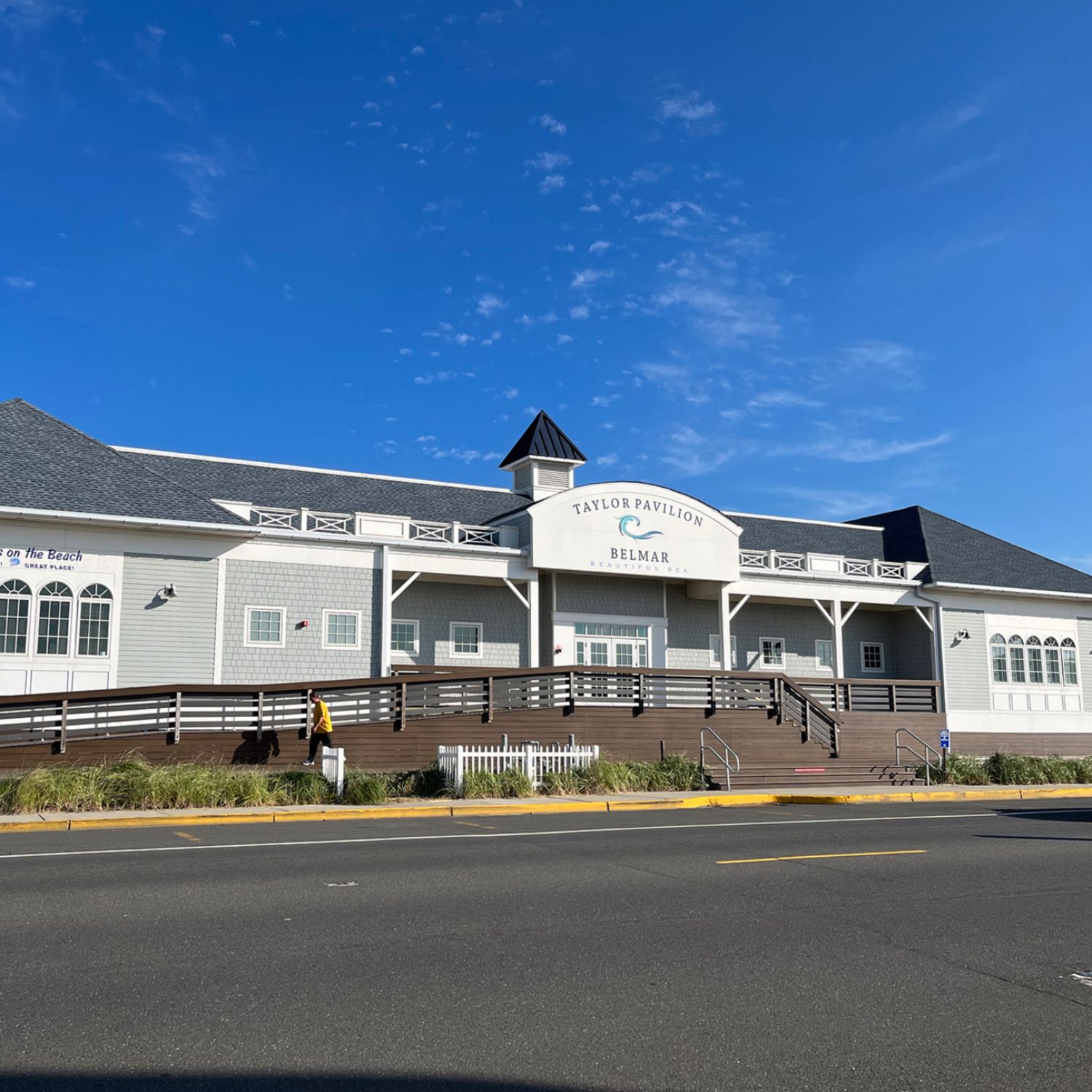Taylor Pavilion
- Author
- Merry Brennan
- Published
- Sat 26 Feb 2022
- Episode Link
- https://rss.com/podcasts/belmartreasuretrail/403575
This is the Taylor Pavilion, stop #40 on the Belmar Treasure Trail. For many decades, the old Fifth Avenue Pavilion had been the social centerpiece of Belmar during the summer months. Interestingly, during World War 2, the beautiful ocean-facing windows on the back of the original pavilion were covered with blackout paint. This was one of countless steps taken by Local Defense Councils along the Jersey Shore to darken the oceanfront at night so it would be harder for Nazi U-Boats that prowled our coast to stalk and sink nearby freighters. But once the war ended, popular activities returned to the pavilion. Some of our senior residents still remember the old “Rat Races” held here more than half a century ago. They were post-war teen dances and canteens that helped young men and women escape from their daily “rat race.” The original Pavilion burned to the ground in the 1980’s and its replacement was named in honor of beloved former mayor John A. Taylor. That Pavilion was destroyed in Superstorm Sandy in 2012. But the Pavilion was again rebuilt and continues to host many events and activities. Among them are a Big Band Orchestra series and Social Dancing series, free musical offerings that have been a summertime fixture of the Jersey Shore since the 1940s when the Works Progress Administration developed a Depression-era program that set-aside royalties to create work for musicians. The music in Taylor Pavilion continues to this day. The Pavilion is also a community hub for other summertime events, beach badge sales, private parties and more. As you look across Ocean Avenue, you will see Silver Lake, one of several coastal lakes that dot the Jersey Shore. The 13-acre lake is ringed by grassy areas and a macadam trail that is popular for jogging, strolling, dog walking and more. From here, you can see the slate steeple that graces the horizon beyond Silver Lake. It adorns the top of St. Rose Roman Catholic Church and served for decades as an important navigational guide for ships because, as one of the tallest structures around at the time, it was visible for miles.
